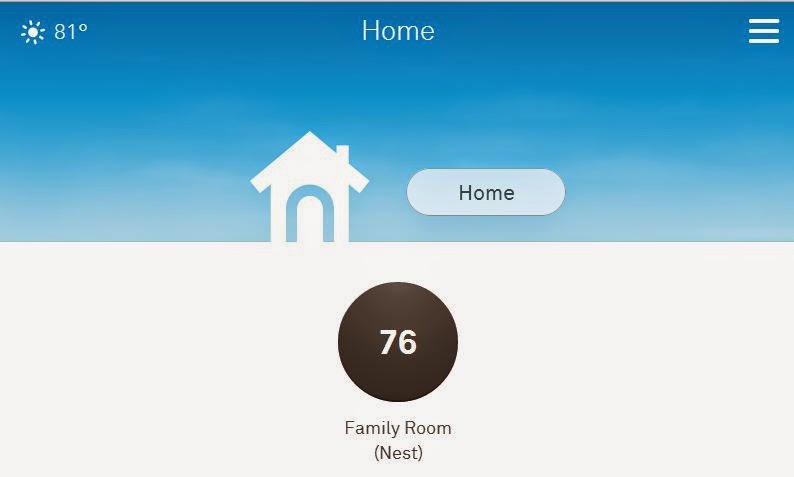The Nest thermostat, that is.
Let's recap on some things. I started this off with a history lesson. And I said that other folks have been taking a run at Home Automation for 40 years. And they've all failed (or had modest success).
What was good about the 1975 Home Automation Technology X10?
- It was cheap.
- It worked, mostly. Usually. Mostly.
- If the protocol wasn't public, it was hackable. It wasn't intentionally secured, obfuscated or encrypted.
So let's revisit them one at a time.
Money
Is what I have cheap? Yeah. Relatively speaking. The weather station was $90. The Eaton Home Heartbeat Starter Kit was about $20. Sensors are $10 give or take. The Raspberry Pi's are $35 each. I haven't mentioned another sensor, but I also have some temperature sensors that are under $10 each.
 I recognize "affordable" is relative, but so far, I'd say what I have is affordable.
I recognize "affordable" is relative, but so far, I'd say what I have is affordable.Reliable
Yes. So far, the systems I have have been very reliable. Much more so than an X10 based system.
Open
Yes. While I favor items with an open, public, sanctioned and supported API, then next best thing are devices that have enough popularity to encourage other engineers reverse engineering their protocols.
And that brings us back to the Subject - the Nest Thermostat.
The Nest Thermostat
Definitely not affordable by my definition. $250 about. That's a lot of money for a darned thermostat.
I'd been hemming and hawing for months. Looking for more affordable alternatives. These guys, the Radio Thermostat company, were the leading candidate. Their devices get great reviews and they have an Open, Supported API!
They're perfect!
Stuff Happens
Then one very cold day, our Honeywell thermostat dies. Did I mention it was a very cold, winter day?
So I need to get a replacement and I need to find one now. And that's how I ended up with a Nest thermostat.
An Aside
Ok - the damned thing is awesome. Fricking amazing. From installation to operation to the portal - 5 stars. Hey Nest - you guys suck. No one should be that good. You nailed the complete user experience. I hate you. You make the rest of us look bad.
Promises Promises
Late in 2013, Nest said they were working in a public API and shooting for a first quarter release date. Well, it's almost June and there's no public API.
But no worries - just like all of the other devices in my house, some resourceful nerd took the challenge to heart and figured it out.
As of this writing it looks like there's a PHP solution, a Python one and a Java based API. I picked, JNest, The Java based way to talk to your Nest Thermostat.
So...?
So, with a little Java code, the Nest Theromstat was added to the Home Automation ecosystem. It pumps out events with the current temperature, the current humidity. It also tells me whether the furnace is on or not, if the AC is running, if it thinks the house is unoccupied.
It's a slick little sensor:
But wait, there's more!
The Nest thermostat also accepts commands.
Remember the Use Case I shared? How come she always forgets to turn down the thermostat when she leaves the house?
We're getting there.
I've got sensors that'll help me figure out when the house is unoccupied.
And I've got a thermostat that I can control, programatically.
I think I'm about to have a Eureka Moment!


No comments :
Post a Comment